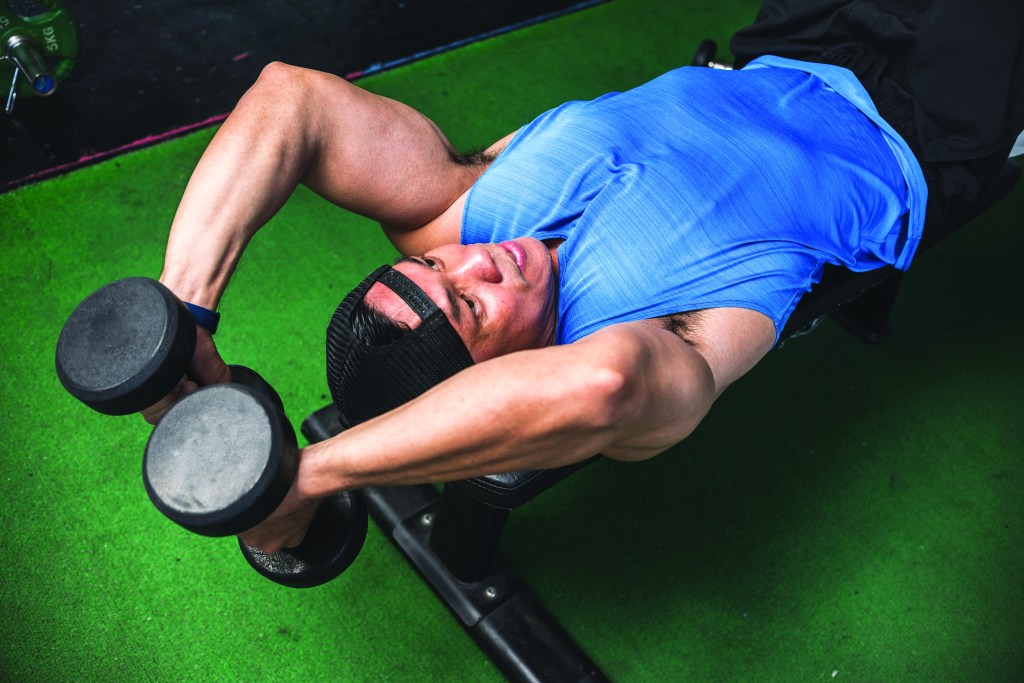Looking for the final push in your session? Finishers should be the icing on the cake of every workout. Sarah Haselwood explains why
You know that feeling when your workout is almost finished, and it’s time to cool down, rest, and recover, but there’s a nagging feeling that you could do just a little bit more – introducing finishers! Love or hate them, finishers are designed to be your final push and are typically intense bursts of strength or cardio exercises.
We discuss how finishers can target different groups of muscles and give some examples to try during your routines – to ramp-up results and expend every last ounce of energy.
Full-body benefits
While in recovery after exercise, your body keeps burning energy. This energy helps you to return to your resting state and includes the increased use of oxygen and calories. It’s known as the ‘afterburn effect’ or post-exercise oxygen consumption (EPOC).
By exerting your muscles in a finisher, your body uses extra energy and causes more muscle wear than exercising at a lower intensity. After your workout, your body needs to restore that energy and fix any muscle damage, which takes a lot of energy and burns extra calories. One study shows that the impact of EPOC can increase calorie burn by 6-15%.
Mental resilience
Danny Brunton, physiotherapist and Enertor ambassador, says finishers can help to improve muscle strength, endurance and mental resilience because you keep going when your body is tired. “These are perfect for short-distance speed races, long-distance running, and athletic endeavours such as Hyrox,” he says.
For Jake Dearden, Hyrox Master Trainer and Represent 247 athlete, much of his training revolves around preparing for the gruelling Hyrox competitions, where energy stores are depleted, and fatigue can set in as the race continues. “Incorporating finishers into my training helps me build the confidence and mental toughness to push through when the race gets tough.
“They maximise your output and achieve optimal muscle fatigue, which is essential for growth. Not only are finishers time-efficient, but they also push you to expend the last of your energy while building mental resilience through the accumulated fatigue of the session.”

How long should they be?
The beauty of finishers is that they’re incredibly flexible. You can use equipment or body weight, and their length can vary. If you’re short on time, you can sneak a 2-minute intense finisher in or, if you’re brave, make finishers last up to ten minutes.
There’s also the option of using specific songs. Moby’s Bring Sally Up may only be three-and-a-half minutes, but if you’ve used this to do up and down planks (Bring Sally up into a high plank position, Bring Sally down onto forearms), you’ll know it’s a challenge!
Types of workout finishers
While your body and mind might be craving a rest, a finisher will test your remaining energy and focus. According to Claire Turner, a functional fitness coach and PT at Lifefit Oxted: “Whatever your training focus, a well-thought-through finisher will upgrade your session; if you haven’t ended with a finisher, did you even work out at all?”
Here are some specific muscle groups to focus on when you incorporate finishers into your workout:
Shoulders
If you have equipment, one option is to ‘run the rack’. Start at one end with the lightest dumbbells and perform one rep and one set of your chosen exercise (for example, front lateral raises). It might sound easy, but as you move along the rack to the next set of dumbbells, increasing the weight and reps, this finisher will become pretty punishing. If you have time, you can do it again—backwards.
Dearden says: “If you’re aiming for a bodybuilding-focused approach, exercises like lateral raises or overhead presses are excellent options. Alternatively, if you’re training for HYROX or CrossFit, you can incorporate functional movements like wall balls or dumbbell thrusters to build strength and endurance.”
Alternatively, you could combine kettlebells and weight plates and set up a finisher, including kettlebell swings, ground to overhead with the plate and around-the-world moves. Choose your sets and the number of reps per set. Shoulder burn is pretty much guaranteed.
Dearden’s go-to for shoulders includes thrusters, push presses or wall balls. He says: “They build aerobic endurance and full body strength, both integral for HYROX.” He suggests:
4RFT (rounds for time)
15 calories ski erg
15 dumbbell push presses
Core
Your core is key for midsection stabilisation, and the main muscles of the core are your internal and external abdominal obliques, pelvic floor, rectus abdominis, transverse abdominis and erector spinae. Your obliques are crucial for stability, trunk movement, lateral bending and flexion of the spine. Finishers that work the obliques include side planks or crunches, Russian twists and renegade rows.
Turner incorporates finishers into her classes as she believes they encourage maximum effort when motivation and effort may be lacking. “Finishers are intrinsic to the perfect session,” she says. “They utilise the last dregs of energy to either exhaust the focus muscle group or target one that may have been underworked.”
She often includes core-focused finishers, including kettlebells. “Kettlebells are a fantastic addition as they are versatile, and each client can choose a weight to suit them.”
Her favourite combination of the core with kettlebells is (45 seconds on, 15 seconds rest, repeat 3 times):
5 sit-ups
5 plank drags
5 kneeling wood chops
5 Russian twists
Chest
The chest muscles are the pectoralis major, pectoralis minor and serratus anterior and can be worked using body weight or gym equipment.
After taking a typical push (chest, shoulder and triceps) workout class, Turner often uses a simple dumbbell and bench routine (which does not require heavy dumbbells to be effective) as follows:
10 chest presses
10 flyes
10 skull crushers
Then 9 and so on until 1 rep of each

Back and lower back
Dearden suggests pull-ups as an effective bodyweight movement as they work most of your back. “If you want to focus on a specific area, you can incorporate a rear delt fly or cable pullovers,” he says. “For the lower back, back extensions are great as they effectively target the posterior chain.”
His back finisher of choice works on strength endurance for back muscles and also on the aerobic capacity to raise the heart-rate through explosive moves:
AMRAP12 (as many rounds as possible in 12 minutes)
5 pull-ups
10 burpees
15 US kettlebell swings
Glutes
Your largest muscle, the gluteus maximus, is at the back of your hip. However, your glutes comprise the gluteus maximus, the gluteus medius and the gluteus minimus. It’s a crucial muscle group for many daily functions, so strengthening your glutes during the last minutes of a workout is ideal.
For a bodyweight glutes finisher, do two to four sets of 15 reps of four exercises and rest for 45 seconds between each set. Depending on your equipment, exercises could include glute bridges, squats or squat variations (eg goblet or Bulgarian split squat), step ups (vary with weights or height), glute kickbacks, kettlebell swings or deadlifts.
Brunton suggests the following glute finisher (with no rest period in between reps):
10 barbell back squats
10 single-leg hip thrusts (left & right)
10 Bulgarian split squats (left & right)
Repeat 3-4 times with 1 minute rest period between each circuit
Quads
Your quadriceps are involved in almost every exercise you do. At the front of the thigh, they consist of the vastus lateralis, vastus medialis, vastus intermedius and rectus femoris.
Many exercises work the quads, but you could organise a squat challenge for finishers, including dumbbell squats, goblet squats, Bulgarian split squats and bodyweight squats. A lunge, leg press or box jump session also activates the quads.
For quadriceps finishers, Brunton recommends (with no rest period in between reps):
20 walking lunges
20 bodyweight squats
10 single leg, leg extension (left & right)
Repeat 3-4 times with 1 minute rest period between each circuit
Hamstrings
Depending on your workout, your hamstring muscles (at the back of your thigh) may have already taken a bit of a bashing if you’ve done cycling or running. Key exercises to work hamstrings include sumo squats, leg curls or kettlebell swings. Romanian deadlifts will give the hamstrings a workout while possibly not feeling as intense as other exercises.
Brunton likes this hamstring finisher (with no rest period in between reps):
10 leg curl single leg (left & right)
10 Romanian deadlift
10 leg curls both legs
Repeat 3-4 times with 1 minute rest period between each circuit






